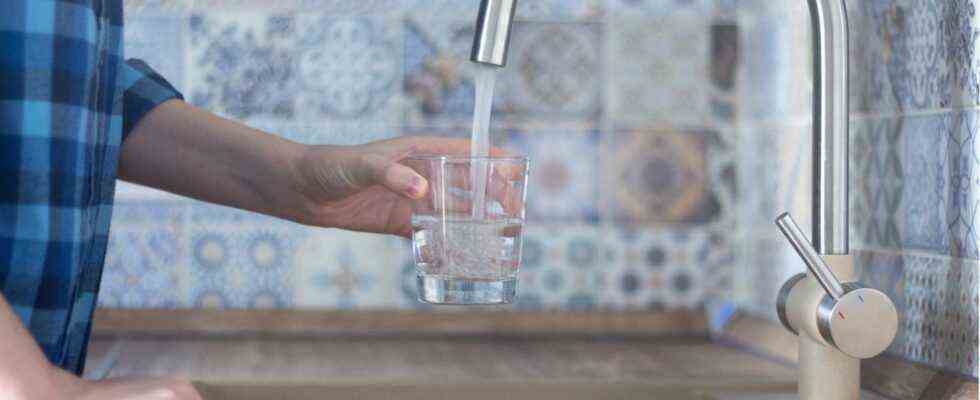Limescale deposits
Descaling the water: You can use these methods at home
Depending on the region, the drinking water can be particularly calcareous
How calcareous your tap water is depends on the region in which you live. There is a simple method to determine the so-called degree of hardness. How it works and which indications speak in favor of descaling your water is explained here.
The lime in tap water is usually tasteless, so there is no need to descale the water to make it taste better. However, there are regions in Germany where the hardness of tap water is particularly high. Brief explanation: Lime contains calcium and magnesium. The more of it there is in the water, the “harder” it is. And in fact, extreme water hardness (such as in Berlin, Cologne or Düsseldorf) can have a negative effect on the taste – but not on our health. However, this does not change the fact that annoying limescale deposits on kitchen appliances such as coffee machines and kettles become noticeable over time, which damage the devices in the long term. You can find out how to find out the degree of hardness and descale the water as follows.
How to determine the hardness of drinking water
To determine the degree of hardness, you can choose between two options:
- You call the responsible public utility company.
- They lead one Water hardness test by.
With the help of the test strips you can determine the German hardness (° dH), it is the decisive unit for the degree of water hardness and is divided as follows:
- soft: less than 8.4 ° dH
- medium: 8.4 ° ie up to 14 ° dH
- hard: more than 14 ° dH
What are the reasons for descaling?
As already explained at the beginning, there are no health reasons that speak in favor of decalcifying the drinking water. It’s all about personal taste and how you prefer to drink your tap water. If it is particularly hard, however, stubborn limescale deposits can become noticeable in the bathroom and kitchen. Faucets that are calcified do not look particularly nice, and the water can often no longer flow unhindered through the tap. For household appliances (for example coffee machines, dishwashers or washing machines), however, lime is even more harmful, as it can clog hoses and thus paralyze the entire technology. Apart from that, the machines have a significantly higher energy consumption when they are heavily calcified. For these reasons, it makes perfect sense to regularly descale your kitchen machines and fittings in the bathroom. Superficial deposits can be removed with citric acid remove well. For coffee machines there is Special descaler. However, if you want to descale the water, there are more effective methods.
Descaling the water: three practical household tips
There are several ways to descale tap water. Three of them are briefly presented below:
Option 1: boil water
Boil the water, for example in a saucepan or kettle, and then pour it through an ordinary coffee or tea filter – this will leave the limescale stuck in the filter. You can repeat this process several times as there is less lime in the water after each course. However, this makes this process extremely time-consuming and not for everyone. Alternatively, you can also use a special Descaler for small household appliances use, with the help of which limescale deposits are loosened when boiling.
Option 2: insert a water filter
If you drink tap water often and happily or use it to boil coffee or tea, you can descale it faster and more efficiently by using one special drinking water filter (for example from Brita). This is located in a practical plastic carafe and filters the lime (as well as chlorine, copper and lead) from the water using ion exchangers and activated carbon. The only downer: the filter must be replaced regularly so that your tap water remains free of limescale in the long term.
Option 3: Install a filter system
If you live in a region where the water is particularly hard (i.e. calcareous), it is worth investing in a professional filter system. These are attached directly to the water connection and decalcify your drinking water as it leaves the tap. Here, too, cleaning takes place with the help of ion exchange so that the water becomes softer. Depending on the manufacturer and model, a Filter system cost between 50 and 300 euros. In addition, many models only fit kitchen fittings with an external thread.
You might also be interested in:
This article contains so-called affiliate links. Further information are available here.

